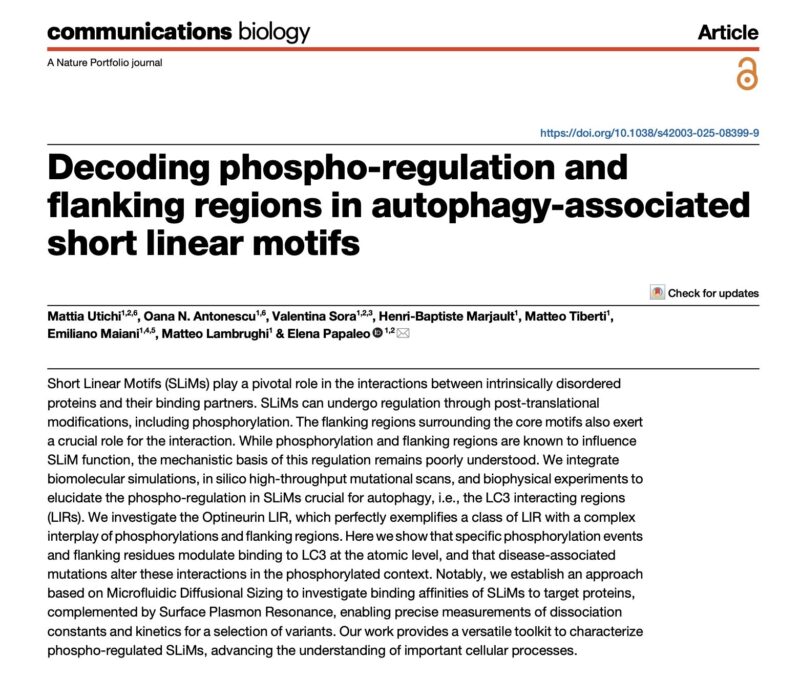Danish Cancer Institute shared a post on LinkedIn about a paper by Mattia Utichi et al. published in Communications Biology:
“NEWS: A new study from researchers at the Danish Cancer Institute and DTU – Technical University of Denmark reveals how subtle chemical changes can fine-tune one of the cell’s main recycling systems: autophagy.
The team focused on optineurin (OPTN), an autophagy receptor that helps cells clear damaged components. They found that phosphorylation, the addition of small phosphate groups, near OPTN’s short linear motif (LIR) can dramatically strengthen its binding to the partner protein LC3B. These modifications act like molecular ‘switches,’ reshaping the interaction and boosting autophagy efficiency.
To uncover this mechanism, the researchers combined molecular simulations with advanced biophysical tools, including microfluidic diffusional sizing, which can capture even very transient protein interactions.
Ph.d. and first author Mattia Utichi says:
‘It’s exciting to see how much we can learn when we bridge computational models with precise experiments. With this work, we provide new mechanistic insights into autophagy regulation and a framework to explore the impact of mutations linked to human diseases.’
The findings provide fresh insight into how phospho-regulation of SLimS controls autophagy at the molecular level.
Elena Papaleo, group leader in the Cancer Structural Biology group, says:
‘This study shows how small chemical modifications like phosphorylation can fine-tune autophagy. Gaining this kind of mechanistic insight helps us better understand how cells maintain their health and what may go wrong in disease.’ “
Title: Decoding phospho-regulation and flanking regions in autophagy-associated short linear motifs
Authors: Mattia Utichi, Oana N. Antonescu, Valentina Sora, Henri-Baptiste Marjault, Matteo Tiberti, Emiliano Maiani, Matteo Lambrughi, Elena Papaleo
You can read the Full Article in Communications Biology.

More posts featuring Danish Cancer Institute.
